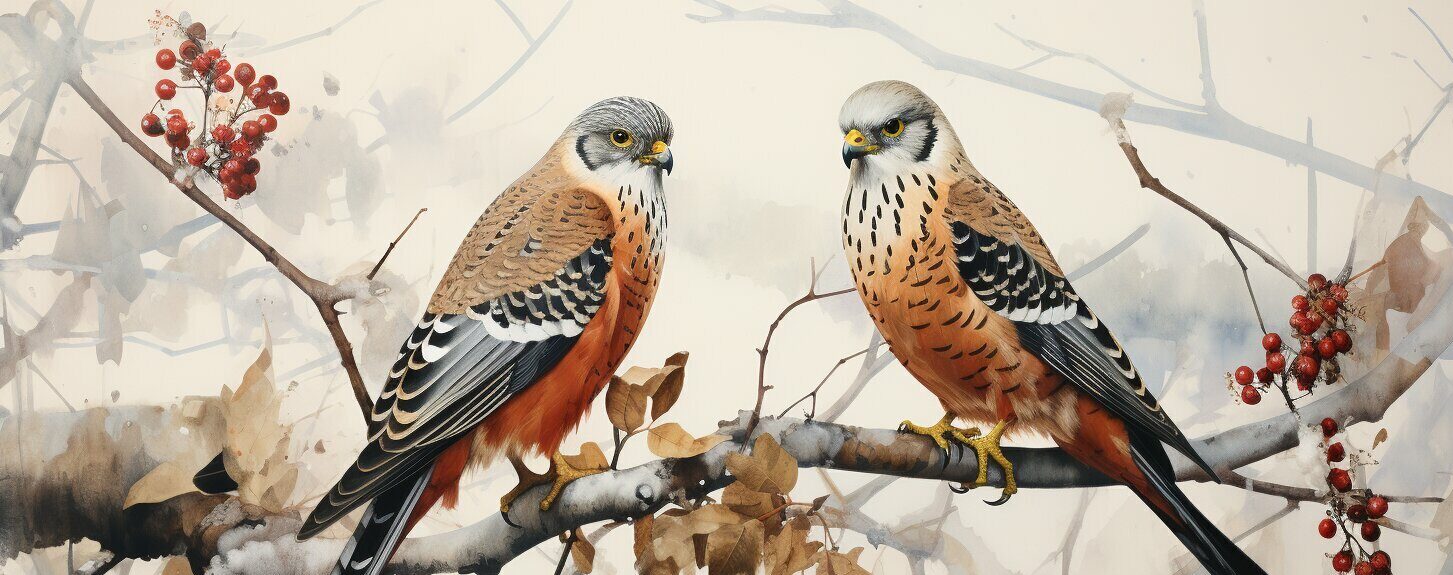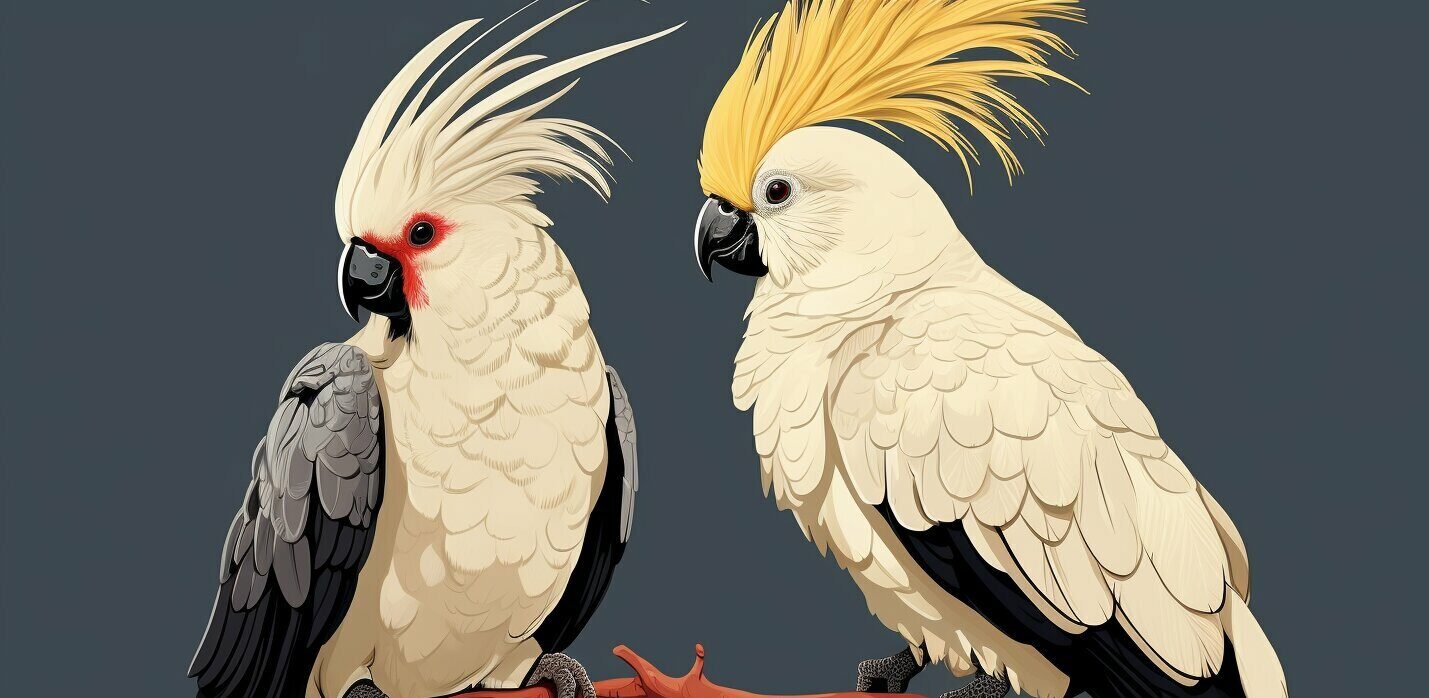Emus and cassowaries are fascinating avian species that share a unique family trait – they are both flightless birds. However, these two creatures have distinctive characteristics that set them apart from each other. In this article, we will explore the differences between emus and cassowaries, focusing on their physical appearance, habitat, feeding habits, behavior, and social structure.
Key Takeaways:
- Emus and cassowaries are both flightless birds but have distinctive characteristics that set them apart.
- We will explore the differences between these two bird species in terms of their physical appearance, habitat, feeding habits, behavior, and social structure.
Emu Characteristics
Emus are the second-largest birds in the world, surpassed only by their close relatives, the ostriches. They stand up to 6.6 feet tall and can weigh up to 120 pounds, making them formidable creatures to encounter.
Their feathers are unique in that each individual strand has two separate shafts, which help insulate the bird from both heat and cold. This adaptation allows emus to live in a variety of harsh environments, from the arid outback of Australia to the chilly forests of Tasmania.
Emus are also known for their long and powerful legs, which they use for both running at high speeds and for balance while standing still. Their three-toed feet have sharp claws, which can be used for self-defense if necessary.
Another characteristic of emus are their distinctively long necks, which they use to reach leaves and branches up high. They also have small, beady eyes that are well-adapted to seeing long distances even in bright sunlight.
Cassowary Characteristics
Cassowaries are large, flightless birds that are native to the tropical forests of New Guinea and northeastern Australia. They belong to the ratite group of birds, which includes ostriches, emus, and kiwis. Here are some of the unique characteristics of cassowaries:
| Physical Attributes | Behavioral Traits |
|---|---|
| Vibrant plumage: Cassowaries have black feathers that reflect a bright iridescent blue or purple in sunlight. They also have bony casques on their heads that serve as protection. | Shy and elusive: Cassowaries are notoriously difficult to spot in the wild and prefer to avoid contact with humans. |
| Powerful legs: Cassowaries have powerful legs with three-toed feet that are equipped with sharp claws. They can run up to 31 miles per hour and jump up to 5 feet in the air. | Aggressive tendencies: When cornered or threatened, cassowaries can be extremely dangerous and have been known to attack humans and animals. |
| Large size: Cassowaries can grow up to 6 feet tall and weigh up to 160 pounds. | Mating rituals: Cassowaries engage in complex mating rituals that involve elaborate dances and vocalizations. |
Overall, cassowaries are fascinating birds that have captured the attention of researchers and bird enthusiasts alike. Their distinctive physical attributes and behavioral traits make them one of the most unique species in the avian world.
Habitat and Environment
Emus and cassowaries are found in different parts of the world and have distinct preferences when it comes to their habitats.
| Emus | Cassowaries |
|---|---|
| Emus are native to Australia and can be found across most of the continent, particularly in the arid and semi-arid regions of the interior. | Cassowaries are found in the tropical rainforests of Papua New Guinea and parts of northeastern Australia. |
| They prefer open grasslands, savannah, and forests with sparse undergrowth, and can also be found in agricultural areas and near water sources. | Cassowaries are primarily found in lowland rainforests and swamps, and are known to occasionally venture into nearby grasslands. |
| Emus are adaptable birds and can survive in a variety of environments, including desert and scrubland habitats. | Cassowaries require dense forest cover and rely on the rainforest ecosystem for their survival. |
Both species are well-adapted to their respective environments and play important roles in their ecosystems.
Diet and Feeding Habits
Emus and cassowaries are both omnivorous species, feeding on a variety of plants, insects, and small animals.
Emus have a broad diet, and their feeding habits can change depending on the season. They typically feed on fruits, seeds, and leaves of native flora, as well as insects, spiders, and other small invertebrates. During periods of drought, emus may also eat the bark and wood of trees to obtain moisture and nutrients.
Cassowaries have a more specialized diet, consisting mainly of fruits. They are particularly fond of figs, and their digestive system is highly adapted to break down the tough seeds within these fruits. Cassowaries also consume a variety of other fruits, as well as small animals such as insects and snails.
Both emus and cassowaries have a unique feeding behavior. They use their beaks to peck at and pick up food, and their long necks allow them to reach high branches and foliage. Additionally, they have a gizzard, which helps to grind up tough plant matter and aid digestion.
Behavior and Social Structure
Emus and cassowaries are both fascinating in their behavior and social structure. They exhibit various behaviors that are unique to these species, making them stand out from other birds.
Emu Behavior
Emus are known for their curious and social nature. They are known to explore their surroundings, and their inquisitive nature leads them to investigate anything that catches their attention. Emus tend to be territorial and aggressive towards other birds, especially during the breeding season.
During breeding season, males become very vocal and call out to attract females. They engage in courtship displays, such as neck and body movements, and may even drum on their chests to create a loud thumping sound.
Emus form pairs during the breeding season and raise their young together. Both males and females take turns incubating the eggs, and once the chicks hatch, they are fiercely protected by both parents.
Cassowary Behavior
Cassowaries are known for their bold and unpredictable behavior. They can be extremely aggressive towards humans and other animals if they feel threatened. Due to their size and strength, cassowaries are considered one of the world’s most dangerous birds.
Cassowaries are solitary birds, and males are generally more solitary than females. They communicate through deep booming calls and have a complex social structure that involves hierarchies based on size and strength.
During the breeding season, males construct a nest and incubate the eggs. They are known to aggressively defend their nests against any intruders, even humans. Once chicks hatch, both parents care for them until they reach maturity.
Conclusion
Although emus and cassowaries are both flightless birds, they exhibit different behavior and social structures that make them unique from one another. Emus are curious and social birds that form lifelong bonds with their partners and raise their young together. In contrast, cassowaries are solitary, aggressive birds with a complex social hierarchy based on size and strength. Understanding these differences can provide a deeper appreciation for these fascinating avian species.
Similarities Between Emus and Cassowaries
Although emus and cassowaries display several contrasting physical and behavioral characteristics, there are some crucial similarities between them.
One of the most prominent similarities is that both emus and cassowaries are flightless birds belonging to the ratite family. As a result, they have a flat breastbone instead of a keeled breastbone, which is essential for flight muscles in other bird species.
Another shared characteristic is their diet. While both species are omnivorous, they primarily feed on fruits, seeds, insects, and small animals. They use their sharp beaks to snap up food, and their long necks allow them to reach food on the ground or in trees.
Emus and cassowaries have developed unique adaptations to their respective habitats. For instance, both species have evolved to thrive in environments with low food and water availability. They can consume large amounts of food and water when available and go without for extended periods.
Furthermore, both emus and cassowaries exhibit complex mating rituals and form distinct social hierarchies. During breeding season, males will compete for dominance, and the winning male will mate with the female. The female takes sole responsibility for incubating and raising the young.
In conclusion, despite the obvious differences between emus and cassowaries, there are several underlying similarities between the two species that have arisen from the shared evolutionary history of the ratite family. Understanding these similarities can provide a more comprehensive view of these fascinating birds.
Conclusion
Emus and cassowaries are two remarkable avian species with unique characteristics, behaviors, and habitats. While they share similarities within the ratite family, they have distinctive differences that set them apart.
Emus are characterized by their brown plumage, small wings, and long necks, while cassowaries are known for their vibrant feathers, powerful legs, and casques atop their heads. Emus roam across the Australian outback while cassowaries can be found in the rainforests of Australia and Papua New Guinea.
Both emus and cassowaries are omnivorous, but their diets differ. Emus primarily feed on plants, insects, and small animals, while cassowaries rely on fruits, small animals, and carrion. Their behavior and social structure also vary, with emus living in small groups and cassowaries pairing for life and raising their young together.
Despite their differences, emus and cassowaries are both flightless and play crucial roles in their ecosystems. Emus act as seed dispersers and help maintain grasslands, while cassowaries contribute to forest regeneration and help distribute plant seeds.
By understanding the unique characteristics and qualities of emus and cassowaries, we can appreciate and protect these incredible species for generations to come.
 Skip to main content
Skip to main content


